
A Feeling About the Weather, Part 1
In this month’s Sightings, we posed the following question: Have the winds been getting lighter in California? This is not an uncommon query we’ve heard from some of our readers, and a seemingly relevant question to ask given the planet’s changing climate. Curious, we reached out to a few experts, who offered us an informal analysis, and also did some of our own journalists-with-liberal-arts-degrees investigation into meteorology — and psychology.
The short answer is no. There has been no significant decrease in wind strengths during the last few decades. But perhaps more importantly, we found that our perception of the weather is inextricably melded to our feelings and memories. If you’re a sailor, you probably have some kind of connection with the weather, and like many ‘relationships’, it can be deeply fraught with emotion. If you’re a sailor, you might intertwine a sense of angst, competitiveness, joy, fear, disappointment, disbelief or outright love (or its occasional opposite) with the weather. Add to this mix the proliferation of forecasting apps and the addictive qualities of our phones, and you’re talking about a seriously complex relationship worthy of psychoanalysis.
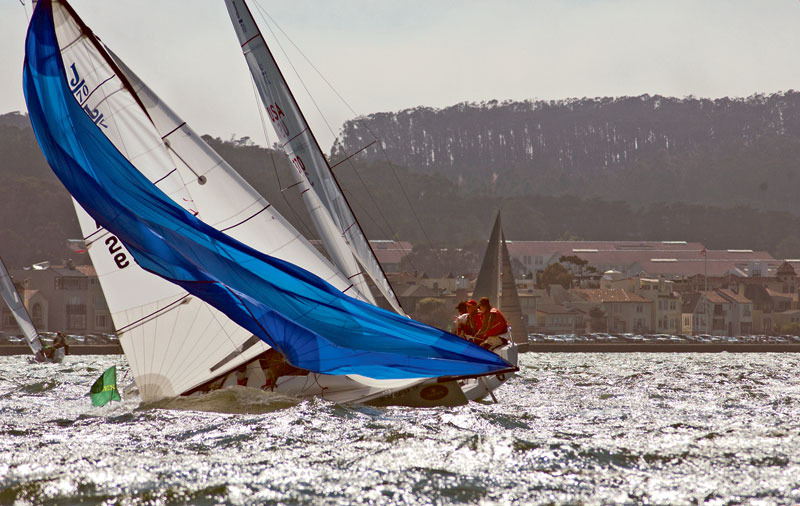
And on top of all that, add in whatever notion of climate change you believe in — assuming that you do. (A few readers disagree with the premise that it’s "a seemingly relevant question to ask given the planet’s changing climate." We’ll have a full discussion in part 2 of this story.) NASA’s Global Climate Change website tells us that we’re already experiencing a "loss of sea ice, accelerated sea level rise and longer, and more intense heat waves." How do we disseminate this broad, aberrant and to some, scary change? Everyone who does believe in climate change may unconsciously interpret it within their own idiosyncratic, highly subjective understanding of the weather. (Admittedly, we have heard people who say "Climate Change!" every time there’s a hot day in the winter just as many deniers will say look, it’s cold in the winter — obviously no climate change).
Amanda Delaney, the senior meteorologist at Weather Routing Inc. (WRI) researched two buoys near San Francisco. "The first was Station FTPC1 located east of the Golden Gate Bridge that had wind data from 2005 through 2017," Delaney wrote us. "After analyzing this, I found there wasn’t an overall decrease in the winds during that time period (it was variable throughout the period). I then reviewed another buoy west of San Francisco, station 46026. This had data that covered from 1982 to 2017. I wanted to see if any funneling winds going into San Francisco Bay diminished with time. The difference I found between 1996-2006 and 2007-2017 was that the average annual winds diminished by 0.2kts between the 10 year periods (there was some significant data missing in the 1980’s and in 2010-2011 from that buoy)."
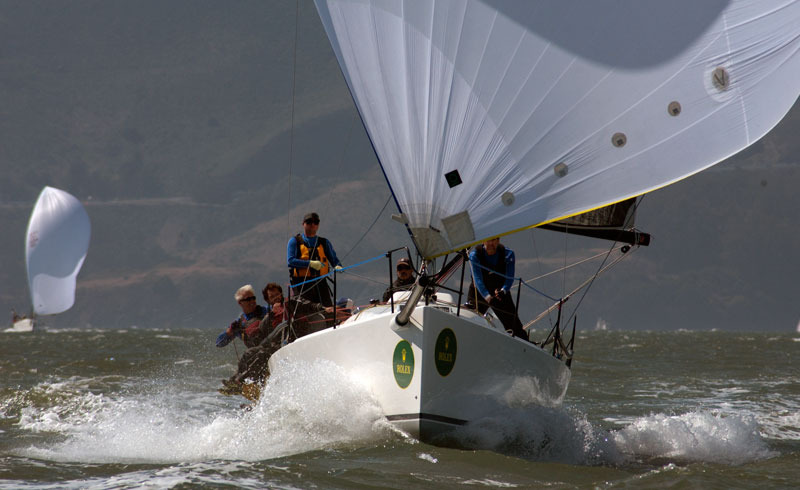
We also looked at wind averages from San Francisco International Airport from 1948 to 2017, focusing just on the month of September from every other year, for the purpose of expedience. Since 1948 (which is as far back as the data go), wind speed averages in the month of September have ranged from about 10.5 to to 12.5 miles per hour. While the ’50s and ’60s saw wind strengths about one-mile-per-hour stronger compared to the following decades, averages have remained fairly consistent. Amanda Delaney said that, "we also need to take into account different instruments that were used to measure wind over time."
But we also need to take into account that we at Latitude 38 were doing a weather "analysis" (we hope you’re laughing with us). Our intention was to use information that was readily available to try to answer the question about a possible trend in diminishing winds. It was by no means a "snapshot" of any patterns; it was a snapshot of a snapshot of a very blurry snapshot. (We’re not sure what we would have done if we’d noticed a significant change.) Again, and to be clear, we’re only talking about feelings here, and not empirical realities.
So we’re curious about your relationship status with the weather. Do you obsess over it? Do you feel like you have a special bond, and can reliably read what the wind is going to do? Are you constantly staring at an app on your phone? Please, let us know.
That One Time
Remember that one time we went sailing with Giovanni Soldini aboard Maserati? It’s been almost exactly a year, but for a while, it was all we could talk about (it’s amazing what a ride on a next-level boat will do to your perception of sailing). In the last year, Soldini and Maserati had an unlucky performance in the Transpac, then went on to smash the 13,000-mile ‘Tea Route’ record from Hong Kong to London. We follow Giovanni on Instagram, where Maserati and her cutting-edge foils are constantly being spruced up — we’re excited to see if another record attempt is on the horizon.
Anyway, our video team — working on a tight, yearlong deadline — finally produced the following video. Please enjoy.
The Atlantic Cup: East Meets West
The Atlantic Cup, an event designed for the box-rule Class 40s, wrapped up in Portland, Maine, over the weekend, with Bay Area sailmaker Sylvain Barrielle sailing aboard Oakcliff Racing. The event has two doublehanded offshore legs — Charleston to New York and New York to Portland — and then two days of inshore, crewed racing among the islands of Casco Bay. Sylvain, who jumped aboard Oakcliff Sailing’s Class 40 in New York for the doublehanded leg to Portland, discovered some classic East Coast sailing conditions with challenging offshore winds, big wind holes in the New York-to-Portland leg and then beautiful, 8- to 17-knot inshore racing.
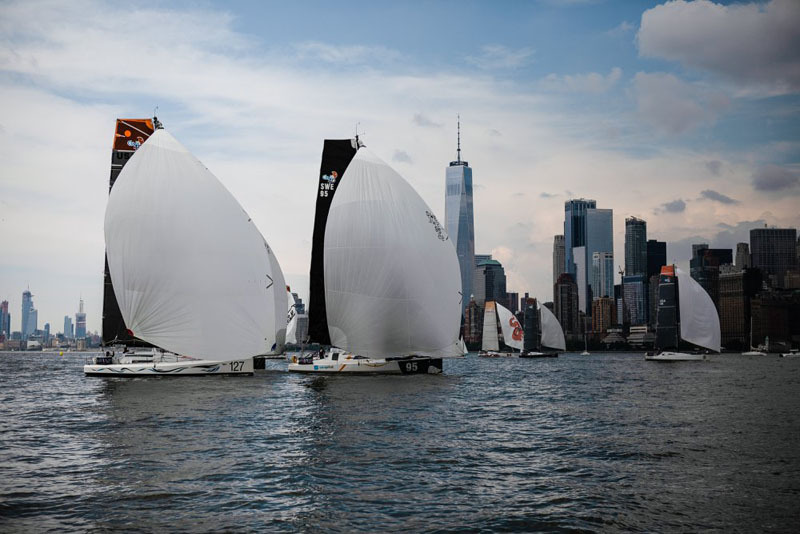
Turns out a couple of other West Coasters were in the fleet. Sean O’Halloran from Santa Clara, who started sailing at Scout camp in Sonoma but is now a coach with Oakcliff Sailing, sailed with Sylvain in the inshore racing. Micah Davis, from Mill Valley (an ‘expat’ Mainer), is a partner in third-place finisher Amhas (Gaelic for the seabird gannet). Micah’s sailing life started in Harpswell, ME, and had taken him all over the world. Despite living in Mill Valley, his current sailing mostly revolves around East Coast Class 40 sailing.
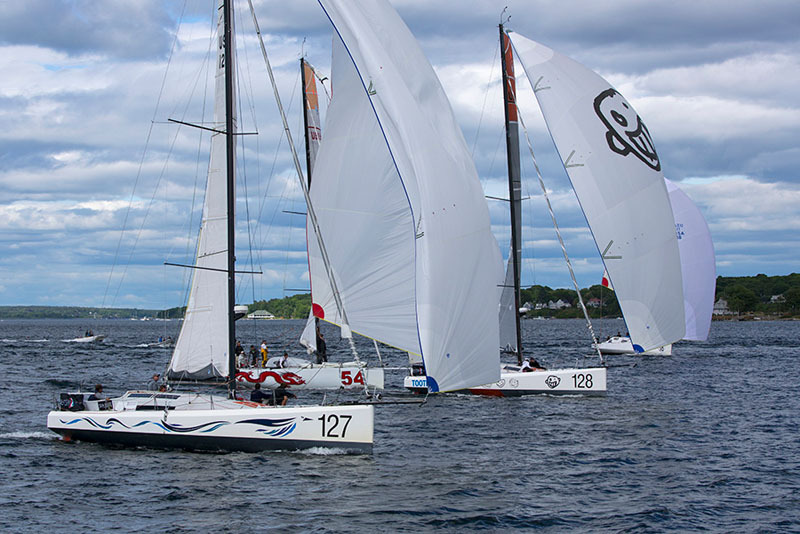
To get an idea of what the Class 40 is like look no further than Buzz Blackett’s Jim Antrim-designed California Condor. In the Atlantic the Class 40 has lots of fans with more than 50 boats registered for the Route du Rhum and more on the waiting list. The Atlantic Cup had a very competitive fleet of 11 with Eärendil coming out on top, followed by Toothface and Micah Davis’ Amhas. Micah sang the praises of the Class 40 design as a fantastic long-distance offshore design but loads of fun to shift gears for the short-course inshore racing. He’s got more sailing plans for the Atlantic in the short term but also is looking to get a Transpac on Amhas’ schedule for the future.
With not much time in the boat Sylvain and Sean faced some challenges, but smoothed things out, dialed in the boat, and ended up the series with some strong finishes and a sixth overall.
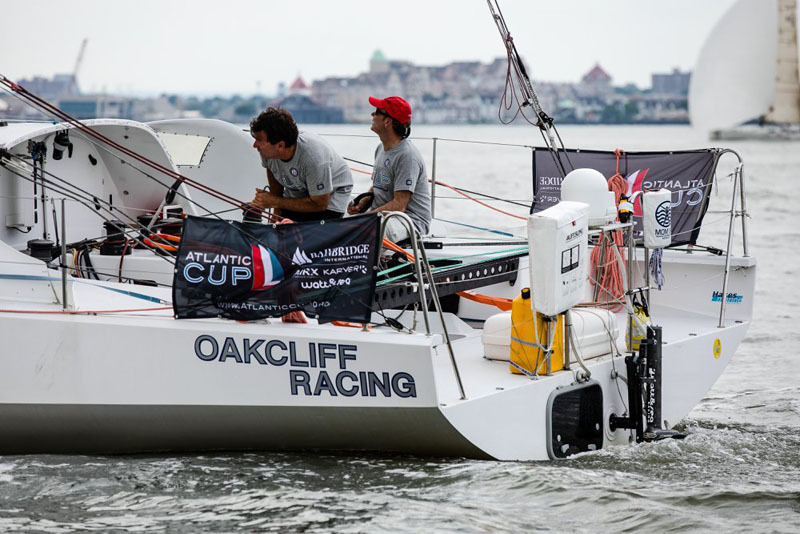
With the first boats launched in 2006, there are now quite a few Class 40s in the world. Their popularity for long-distance, shorthanded, offshore racing seems very well established in the Atlantic. We’ll have to see if Amhas and a few others ever make it West to take on the Pacific’s great offshore challenges.
New Crew Learn to Race
This spring, an innovative experiment proved successful in opening up sailing on the South Bay to more people. The experiment was a three-week class for potential race crewmembers. My own first experience as race crew was rather daunting. I signed up for a race from San Francisco to Monterey on a high-performance 50-footer. Despite having 20 years of cruising experience plus some small boat racing, I found ocean racing on a large keelboat to be quite different. Hiking out on the rail was new. The boat was more complex. Crewmembers had specific roles. Four hours into the race, when I started to unwrap my lunch sandwich, the crewmember next to me said, “I wouldn’t do that now, if I were you.” “Why?” “Because the tactician will call for a tack before you finish your sandwich, and you will have to drop it!” The crewmember was correct. The experienced crew knew what to expect.
The idea of a beginner crew class was to demystify sailboat racing for the uninitiated. The format included three classroom sessions, followed by three beer can races in which class members were assigned to different boats. Week one was about yacht racing in general: race formats, racing rules, crew positions, tactics and safety. Week two was about the upwind leg. The upwind theme was “Go fast in the right direction.” Concepts like “velocity made good” were explained, and the goals for each position on the team were described. Week three was about the downwind leg. The downwind theme was “Go fast in the right direction and get there without mishap!” The differences between asymmetric and symmetric spinnakers were explained, followed by discussion of the things that can go wrong while flying a spinnaker: wraps around the forestay, round-ups, round-downs and shrimping. Twenty-five students participated.
What are skippers seeking in good crew? We polled the 16 boats, and the answers varied considerably. Here are some of the responses:
- Sails consistently and learns quickly, past racing competency a big plus.
- Talent.
- Nimbleness…quick from rail to rail.
- Not overly competitive; doing your best more important than winning.
- Physically smaller/slim (smaller boat).
- Interested in (and open to) learning.
- Consistency. Need crew continuity to build good teamwork and individual skills.
- Good attitude, eager to learn and help out, dependable, strong and agile enough to help out.
Since most skippers were crew at times, we also asked what characteristics were desirable in a skipper. Here are some of the responses:
- Moderate tolerance for error and shows care for crew morale.
- Communicative and in command but not abusive in stress.
- Appreciates crew inputs but acts competently on tactician’s call.
- Lets people try new things.
- Does well in races.
- Being calm and cool in difficult situations; no screaming or swearing — it never helps.
There was a brief session on the Racing Rules and basic crew safety, including a suggestion that every crewmember experience an in-the-water test of the normal gear they wear. “Going overboard can be a shocking experience. Finding out the PFD you wear cuts off your breathing when worn improperly and the auto-inflator deploys can ruin your day,” said Phillip Meredith during his briefing. Several in the class practiced an in-the-water test and consequently made changes to their sailing gear.
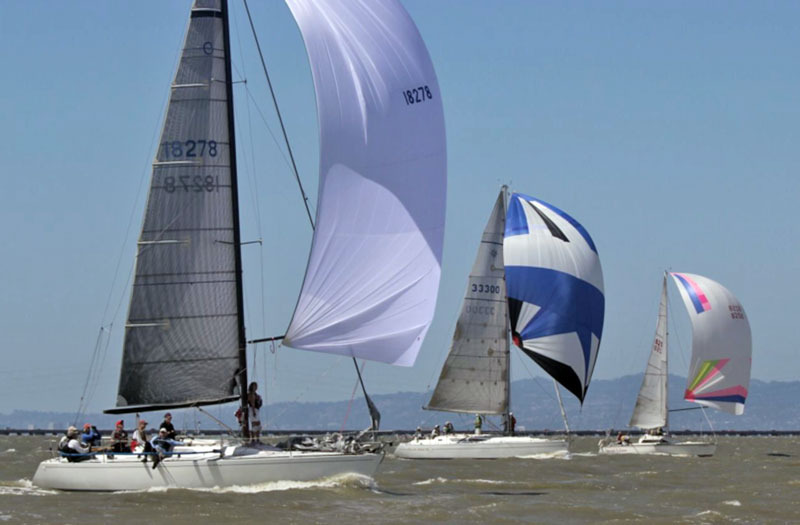
The fun part was the racing. Sequoia Yacht Club runs an informal race each Wednesday, sailing out to the Bay from the turning basin in the Port of Redwood City to a designated mark selected based on conditions. Here are some of the student reactions to their race participation adventures:
Karen Fryling wrote: “My ‘maiden sail voyage’ and I couldn’t have picked a better skipper myself. I had a blast!”
Maggie Heilman wrote: “This class provided a fabulous opportunity to experience three completely different boats and teams, and each was fantastic. Starting with a Merit 25, I had my first opportunity to be the main trimmer; having control of the boat gave me an inner confidence that I hadn’t previously experienced. My second boat was a super-fast multihull racing boat, the Dragonfly 25; it was my good fortune to be out on the day with 29-knot winds, and we were flying at over 17 knots. Thrilling! Who knew masts could rotate? On purpose! My third boat was smaller, a J/70. With a simple crew of three, my position was main trimmer; the experience from my first sail provided me some reassurance as we sailed in heavy winds. Of course the skipper was watching and aware at all times with his hand on the main.”
Scott Scherer, Sequoia’s rear commodore, had this observation: “When Stan Phillips introduced the idea of his New Crew Orientation class, I was intrigued at the prospect and potential that it held. The Sequoia Yacht Club Board of Directors, as well as the entirety of our racing organization, had no idea the popularity this course would have amongst both new racers and veteran skippers/crews. I think it is safe to say we all look forward to the next edition.”
As the instructor, I found the class was fun to teach and the enthusiasm of the students gratifying. Perhaps there will be an encore soon.
